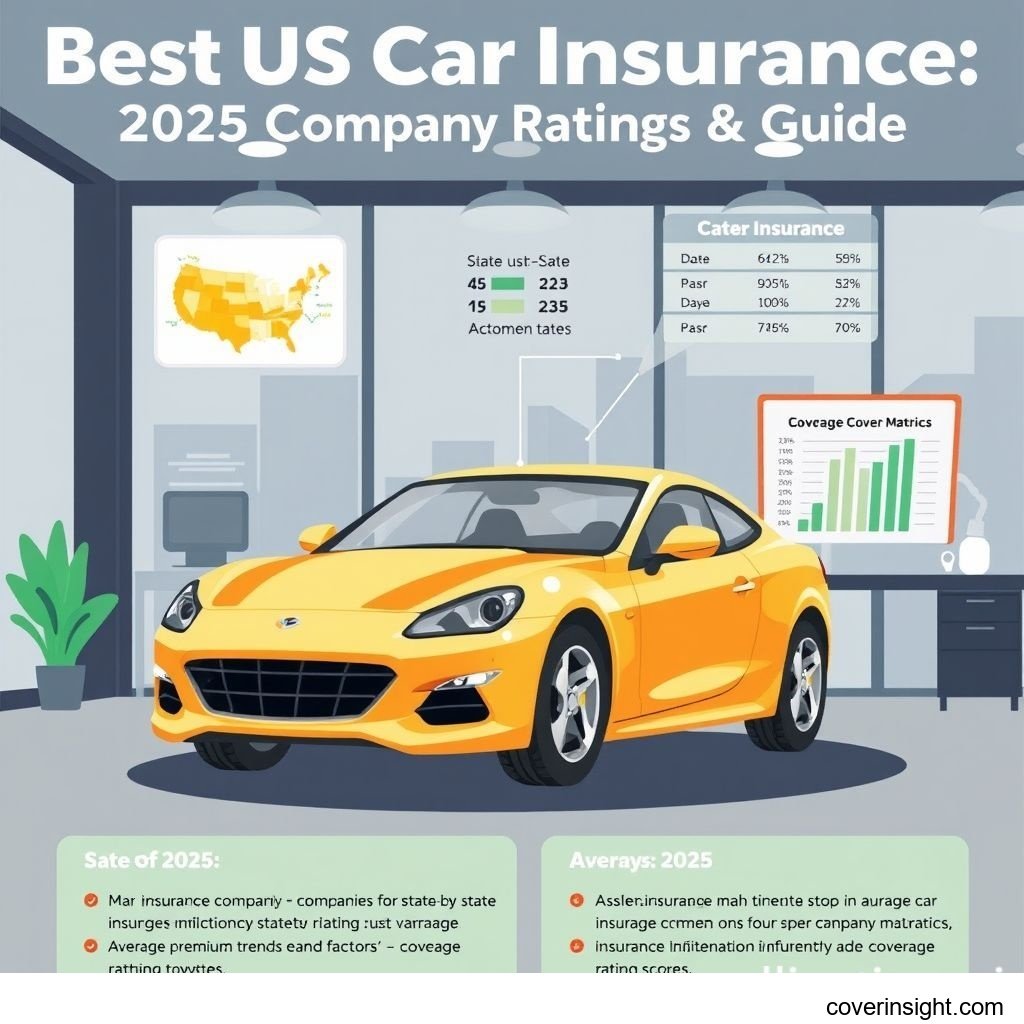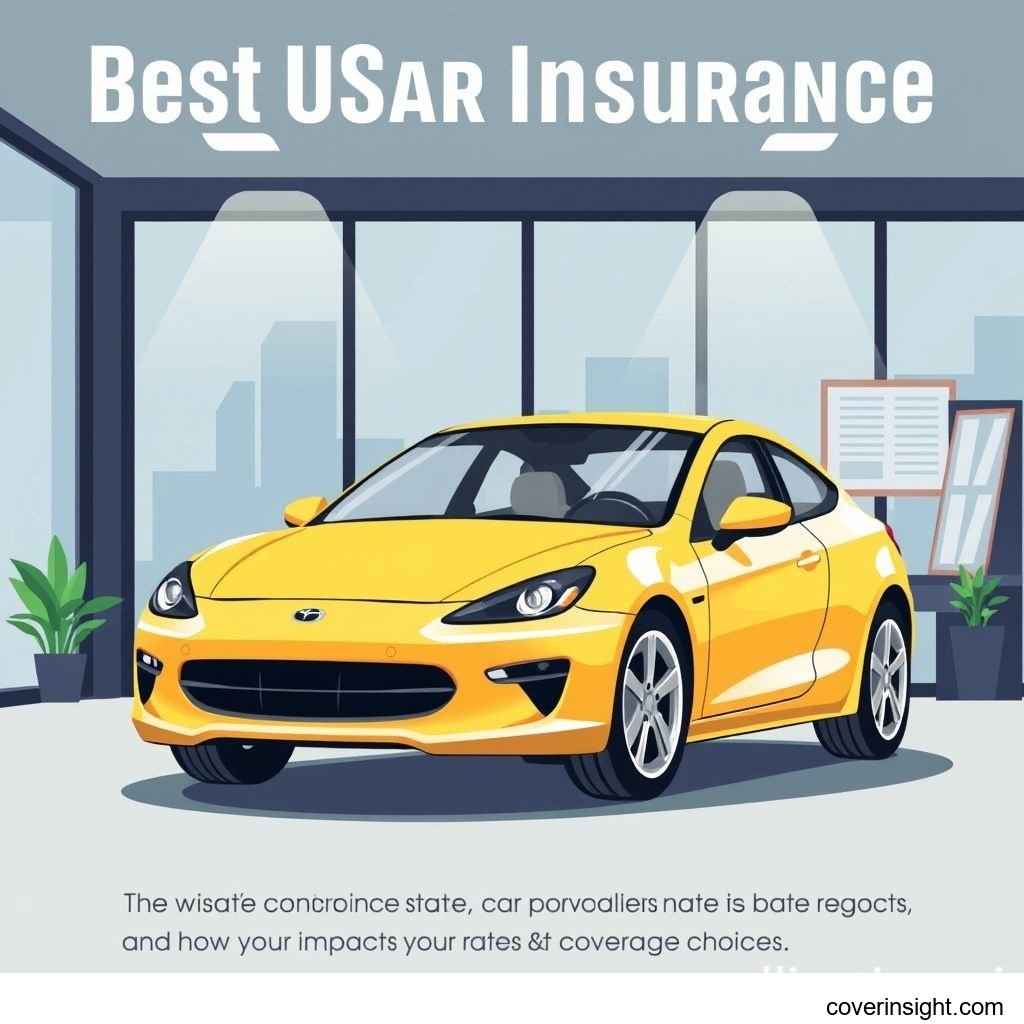Introduction
Navigating the labyrinth of US car insurance can feel like a daunting task, especially with the market constantly evolving. For 2025, understanding the nuances of various state insurance market guides is more crucial than ever. These guides aren't just dry reports; they're essential roadmaps that help you make informed decisions, ensuring you're adequately protected without breaking the bank. From changing regulations to new technological impacts, staying abreast of these developments is key to securing the best coverage for your ride. If you're looking for broader information, you can always check out Insurance Resources Global. For specific US information, our US Insurance Home provides a great starting point.
Coverage Details
Understanding what your car insurance actually covers, and what it doesn't, is half the battle won. It’s not just about having a policy; it’s about having the right policy.
What’s Included
Typically, a robust US car insurance policy includes several core components designed to protect you financially in various scenarios:
-
Liability Coverage: This is the bedrock of most policies and often legally required. It pays for damages and injuries you cause to other people and their property in an at-fault accident. It's split into bodily injury liability (for medical expenses, lost wages, and pain and suffering) and property damage liability (for repairs or replacement of their vehicle or property).
-
Collision Coverage: This pays for damage to your own vehicle resulting from a collision with another vehicle or object, regardless of who is at fault. Think of it as your car's personal bodyguard.
-
Comprehensive Coverage: This covers non-collision incidents, such as theft, vandalism, fire, natural disasters (hail, floods), and impacts with animals. If a tree falls on your car, this is your go-to.
-
Uninsured/Underinsured Motorist (UM/UIM) Coverage: A true lifesaver, this covers your medical bills and vehicle repairs if you're hit by a driver who either has no insurance or not enough to cover the damages. Given that, according to the Insurance Research Council, roughly 1 in 8 drivers nationwide were uninsured in 2021, this coverage isn't just a luxury—it's a necessity in many states.
-
Personal Injury Protection (PIP) / Medical Payments (MedPay): These cover medical expenses for you and your passengers after an accident, regardless of fault. PIP can also cover lost wages and essential services, while MedPay is typically limited to medical bills. While car insurance can cover some immediate medical costs in an accident, remember that comprehensive health coverage is a different ball game. For robust health insurance options, you might explore resources like Healthcare.gov.
Common Exclusions
Just as important as knowing what's covered is understanding what typically isn't. Common exclusions often include:
-
Intentional Damage: If you purposely damage your vehicle or someone else's, don't expect your insurer to foot the bill.
-
Racing or Illegal Activities: Damages incurred while racing, joyriding, or engaging in other illegal activities are almost universally excluded.
-
Wear and Tear: Routine maintenance, tire blowouts from old tires, or general mechanical breakdowns due to age aren't covered; that's just part of car ownership.
-
Using Your Personal Car for Commercial Purposes: If you're using your personal vehicle for ride-sharing, delivery services, or other commercial ventures without specific commercial auto insurance, you might find yourself out of luck if an incident occurs during those activities.
-
Unlisted Drivers: Allowing someone not listed on your policy to regularly drive your car can lead to claim denials. Always make sure anyone who frequently drives your vehicle is added to your policy.
Cost Analysis
Car insurance premiums can feel like a moving target, varying wildly from one driver to the next. Understanding the underlying factors and knowing a few tricks can help keep those costs down.
Price Factors
Several key elements influence how much you’ll pay for car insurance:
-
Driving Record: This is probably the biggest factor. A clean record with no accidents or traffic violations is your golden ticket to lower rates. DUIs, speeding tickets, and at-fault accidents will send your premiums soaring faster than a rocket.
-
Vehicle Type: Insurers look at how expensive your car is to repair or replace, its safety ratings, and how often it's stolen. A flashy sports car will almost always cost more to insure than a sensible sedan.
-
Location: Where you live and primarily park your car plays a huge role. Urban areas with higher traffic density, theft rates, or extreme weather (like those prone to hurricanes in Florida) often see significantly higher premiums. According to the National Association of Insurance Commissioners, the average expenditure for car insurance in the U.S. was approximately $1,265 in 2022, though this figure varies wildly by state – for instance, drivers in Florida and Louisiana often face premiums significantly higher than the national average due to factors like population density, weather risks, and litigation trends.
-
Age and Gender: Younger, less experienced drivers (especially males) typically face higher rates due to their higher statistical risk. Rates generally decrease as drivers mature.
-
Credit Score: In many states, your credit-based insurance score is a factor. Insurers believe there's a correlation between financial responsibility and driving habits.
-
Deductible and Coverage Limits: Opting for a higher deductible (the amount you pay out-of-pocket before insurance kicks in) can lower your premium. Similarly, choosing lower coverage limits will reduce your premium, but at the risk of higher out-of-pocket costs if a major accident occurs.
Saving Tips
Want to cut down on those monthly payments without sacrificing essential coverage? Here are a few tried-and-true tips:
-
Shop Around: This is probably the simplest yet most effective tip. Don't settle for the first quote you get. Different insurers weigh factors differently, so comparing quotes from multiple providers can yield surprising savings.
-
Bundle Policies: Many insurers offer discounts if you bundle your car insurance with other policies, like home or renters insurance. It’s often a win-win.
-
Maintain a Good Driving Record: This goes without saying. Stay safe on the road, avoid tickets and accidents, and you'll be rewarded with lower rates.
-
Ask About Discounts: From good student discounts to multi-car discounts, low-mileage discounts, and even discounts for certain safety features in your car, asking is always worth it. Some insurers even offer discounts for taking defensive driving courses.
-
Increase Your Deductible: If you have an emergency fund set aside, opting for a higher deductible can significantly reduce your premium. Just make sure you can comfortably afford that deductible should you need to file a claim.
-
Improve Your Credit Score: If your state allows it, a better credit score can translate into lower insurance rates.
-
Consider Usage-Based Insurance: Programs that monitor your driving habits (e.g., speed, braking, mileage) via a telematics device or app can offer discounts for safe driving.
-
Choose Your Car Wisely: Before buying, get insurance quotes for different models. Some cars are simply cheaper to insure.
FAQs
How much does state insurance market guides cost?
State insurance market guides themselves are typically free resources provided by state insurance departments or consumer protection agencies. They are designed to help consumers understand regulations, compare policies, and navigate the market, not to be sold. You can usually find them on your State Insurance Departments website.
What affects premiums?
Premiums are affected by a wide array of factors, including your driving record, the type of vehicle you drive, where you live, your age, your credit history (in some states), the coverage limits and deductibles you choose, and even the specific discounts you qualify for. It's a complex algorithm that balances risk and potential payout.
Is it mandatory?
In almost every US state, car insurance is mandatory, at least to a minimum liability level. New Hampshire is a notable exception, though even there, drivers must demonstrate financial responsibility. Failing to carry the minimum required insurance can lead to severe penalties, including fines, license suspension, and even vehicle impoundment.
How to choose?
Choosing the best car insurance involves balancing cost with adequate coverage. Start by assessing your needs (e.g., do you need comprehensive coverage for a newer car?), research reputable companies, compare quotes from several providers, check their customer service ratings, and read policy details carefully before making a decision. Don't just pick the cheapest option; ensure it provides the protection you truly need.
Consequences of no coverage?
Driving without insurance is playing with fire. The consequences can include hefty fines, suspension of your driver's license and vehicle registration, vehicle impoundment, and even jail time in some states. More importantly, if you're involved in an accident and are at fault, you'll be personally responsible for all damages and medical bills, which can easily amount to tens or even hundreds of thousands of dollars, potentially leading to financial ruin. Just imagine Sarah from Los Angeles. She thought she was saving a pretty penny by carrying only the bare minimum liability coverage required by California law. Then, a fender-bender turned into a nightmare when the other driver claimed extensive injuries. Without comprehensive or higher liability limits, Sarah's out-of-pocket expenses for the other party's medical bills and vehicle damage quickly snowballed, teaching her a harsh lesson about being penny-wise and pound-foolish.
Author Insight & Experience
Based on my experience living in the US and navigating its ever-changing insurance landscape, one thing is crystal clear: relying solely on the bare minimum coverage is a gamble that rarely pays off. It's like going on a long road trip with just enough gas to get by, hoping you don't hit any unexpected detours. I've seen firsthand how a small premium difference can be the only thing standing between a minor inconvenience and a financial catastrophe after an accident. It truly feels like an investment in peace of mind, allowing you to breathe a little easier knowing that you're well-covered, no matter what curveballs the road throws your way. It's not just about compliance; it's about common sense and protecting your future.







Comments